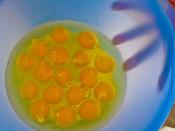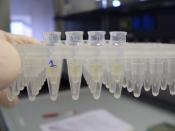* Bacteria
- Bacteria are cells that are big enough to be seen under a light microscope.
- Bacteria are found everywhere: - in the air, in the food, in the water, inside living organisms.
- Some are useful and others are harmful that cause diseases such as pneumonia, tuberculosis, scarlet fever.
- Bacterial cell: has a cell wall, cell membrane, a loop of DNA.
Cell Wall
Cell Membrane
Loop of DNA
*Bacterial growth:
- Bacteria can be grown in sterile conditions in the laboratory.
- A colony of bacteria starts with just 1 cell.
- It divides into 2 cells, then the 2 divide into 4, then the 4 divide in to 8, then the 8 divide into 16 and so on.
- Bacteria multiply very quickly to form a colony.
The three kinds of bacteria:
Rod Spheres Spirals
Lag Phase: Little growth occurs since the cells are taking up water and starting to make enzymes.
Log Phase: The population is increasing rapidly by doubling and there is no shortage of food and water.
Stationary Phase: When bacterial cells are dying at the same rate at which they are being produced. This may be because of shortage of food or water or because waste products are building up.
Death Phase: When more cells are dying than are producing.
*Fungi
- Some fungi cause disease such as Athletes Foot and Ringworm.
- Fungi are not plants since they don't have chlorophyll.
- The main fungus body is called the mycelium.
- It consists of a branching network of threads or Hyphae.
- The Hyphae grows over the surface of their food source.
- They release enzymes which digest the food outside the fungus.
- The digested food is then absorbed by the Hyphae.
- Fungi reproduce...


